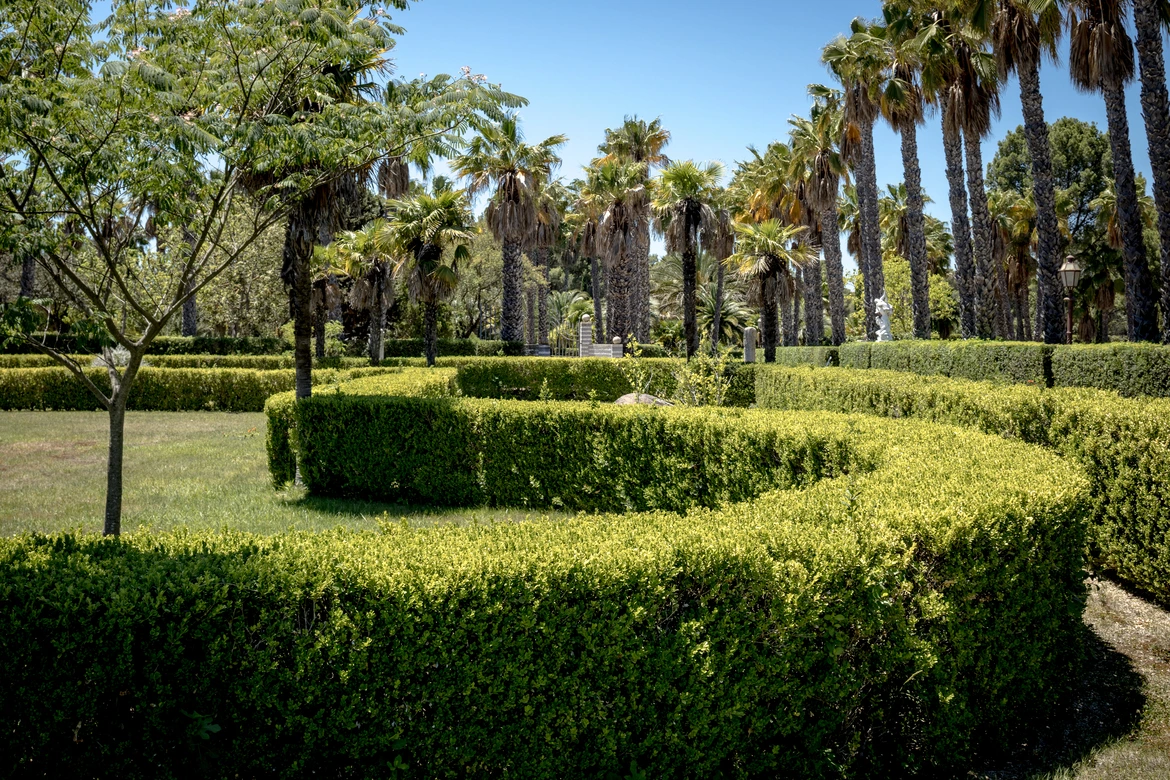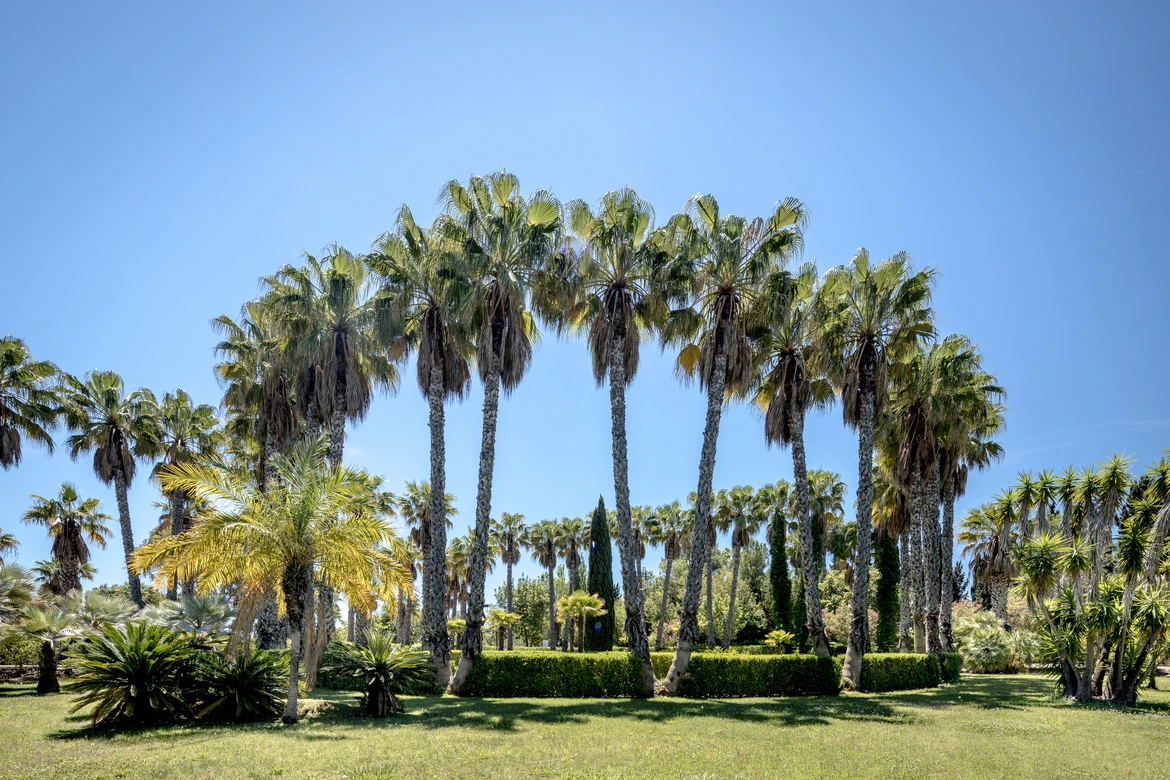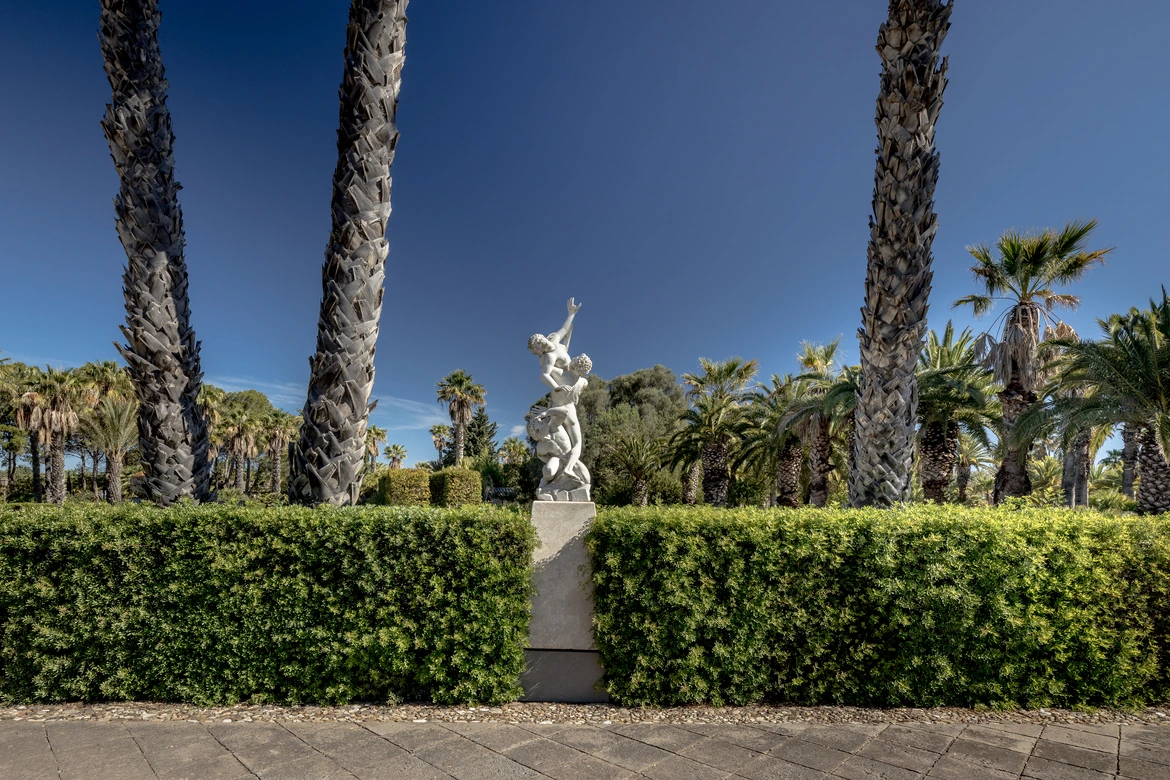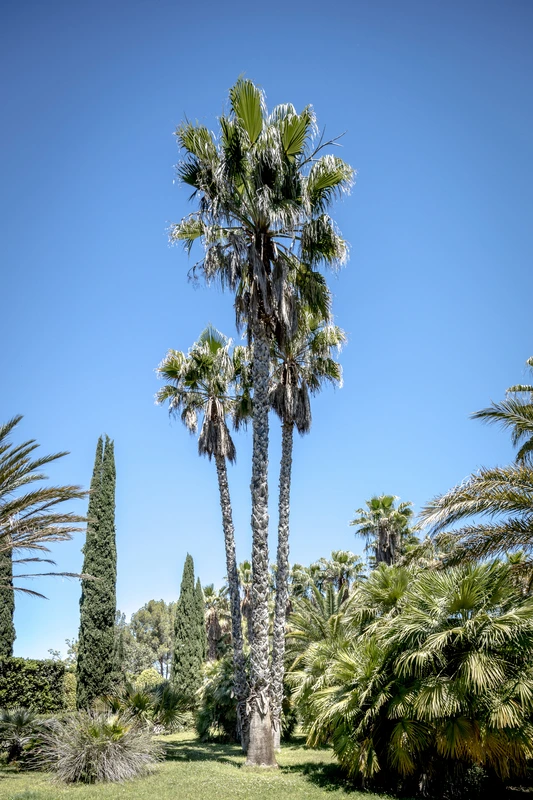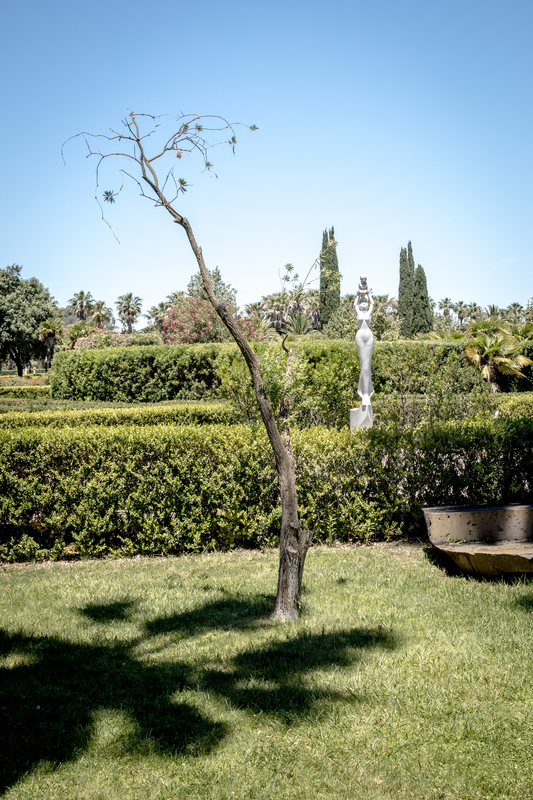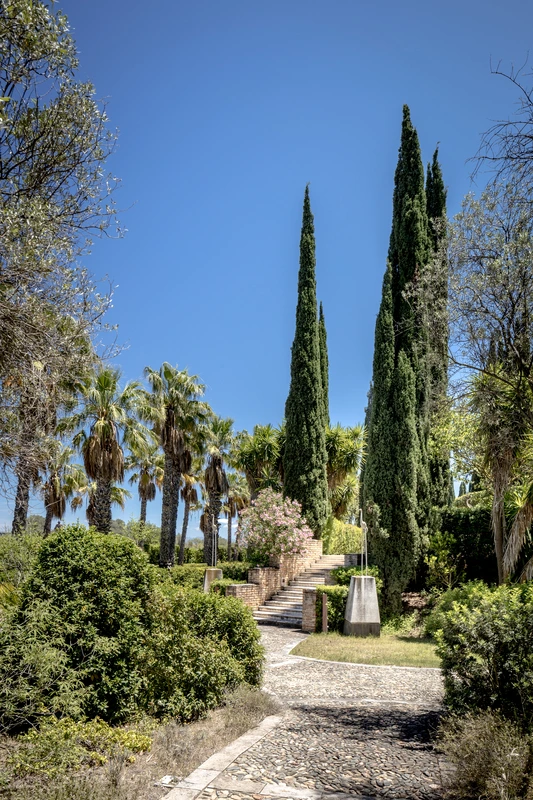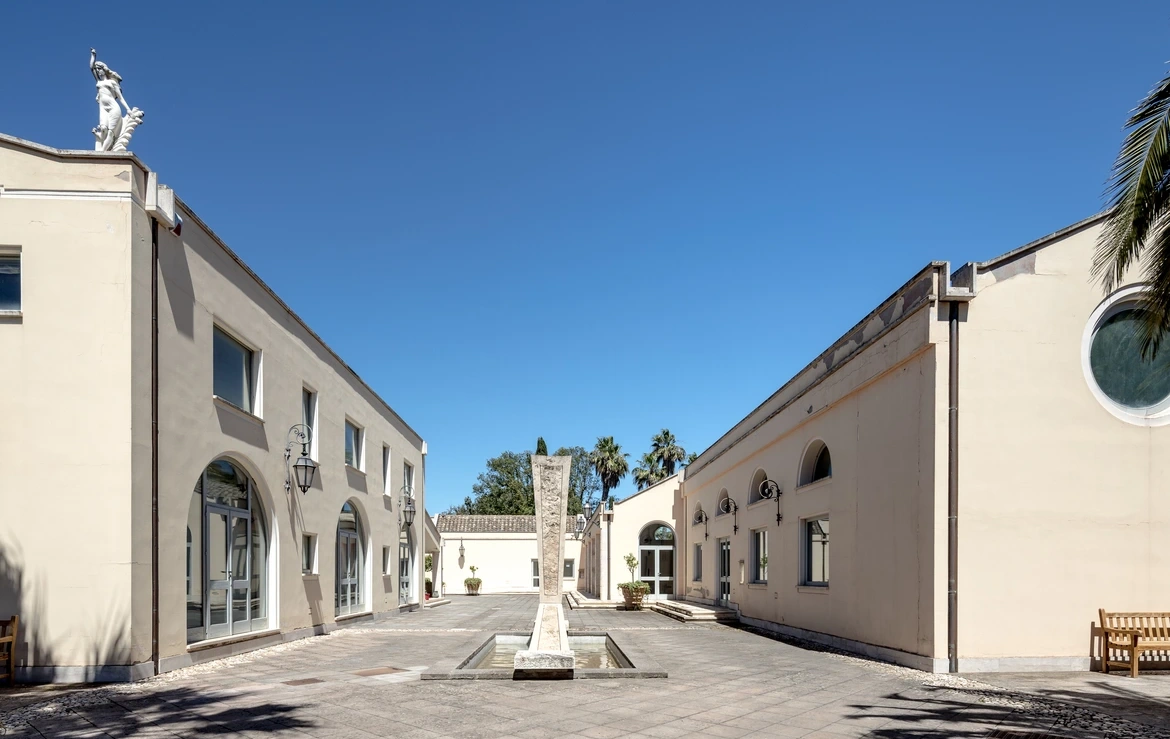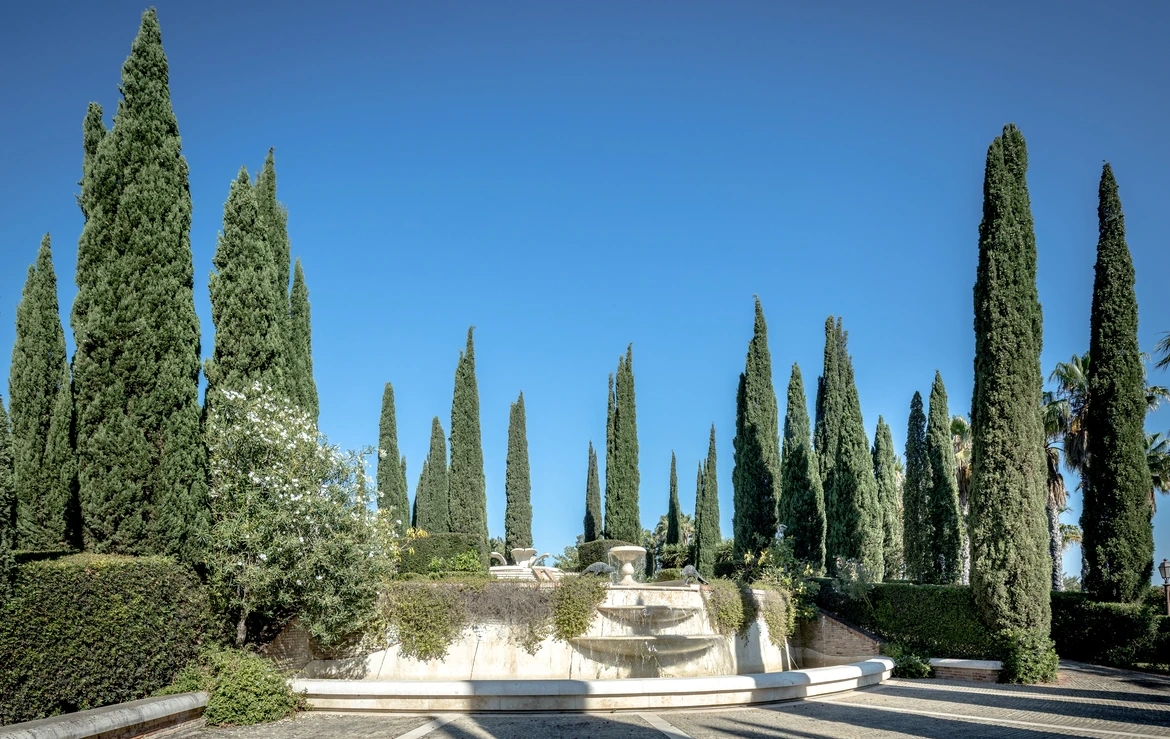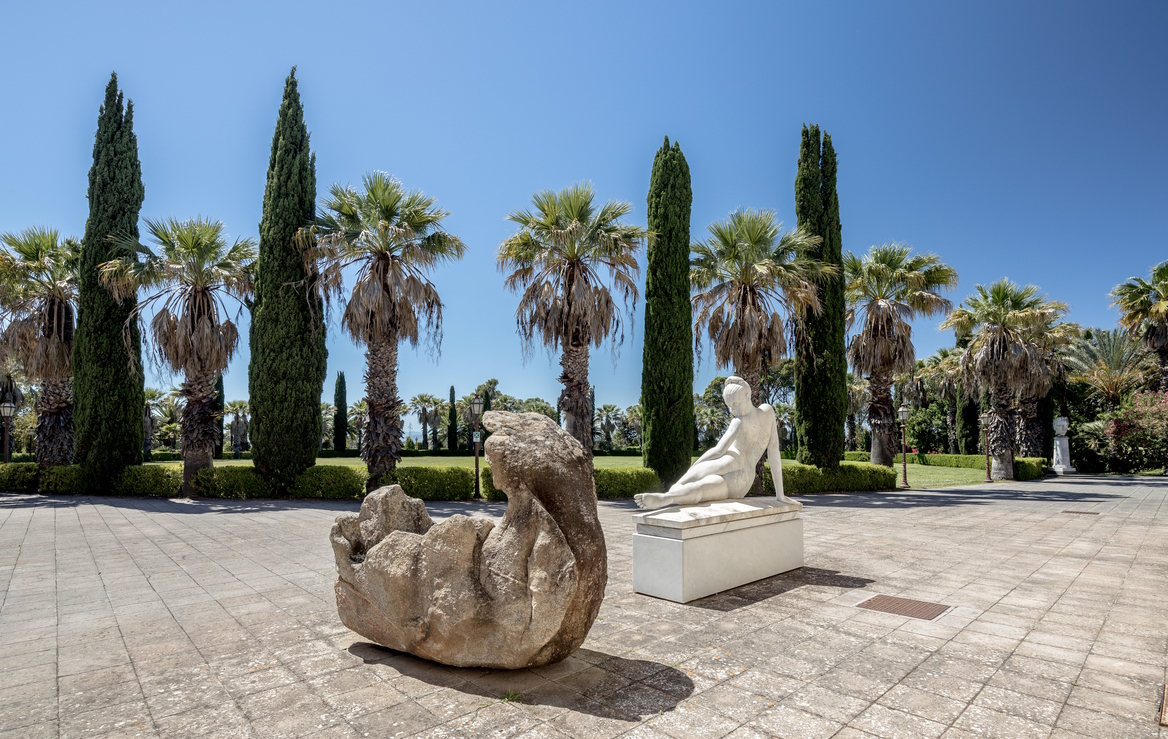THE PARK AND ITS VEGETATION
There is a ‘green lung’ of over 56 acres that extends around the Villa Asquer buildings forming a park of significant scenic and cultural importance. Of great value to our environment, the landscape has been protected by the Autonomous Region of Sardinia since 1990.
For Francesco Morelli, this vast area, acquired in 1977 and meticulously designed to achieve its current appearance, was first and foremost a place for reflection and self-expression. For this reason, the woodland areas, that are left to grown naturally, are interspersed with historical and architectural landmarks and ornamental fountains, an exceptional exotic forest, Italianate gardens and fruit trees. A place where time, both ancient and modern, stands still that requires constant care to preserve its magic.
THE PARK AREA
A mixture of art, history and nature come to life in the park in which 2,100 palm trees are the main feature. They are both natural landmarks and architectural elements, defining specific areas of the estate and accompanying us in our exploration. The 24 species of palm trees come from different parts of the planet and represent an important botanical, cultural and landscape heritage.
THE WOODLANDS
The wooded area of the Villa Asquer estate is a place poised between semi-controlled growth and the preservation of a delicate balance between different species. Covering well over 29 acres, 41% of the grounds, it requires on-going and skilled maintenance to preserve the environmental and architectural resources within it. Every day, the upkeep of the park safeguards the immeasurable heritage of the Asquer estate which extends far beyond its cultural significance.
The woodlands are divided into three areas based on their layout and quality.
Differentiated upkeep
These three woodland areas, which differ so greatly in species and extent, require specific upkeep. The exotic forest, crossed by three cobblestone paths, requires regular watering to ensure the survival of the species present, while the lush wild vegetation must be controlled to prevent it from impeding the survival of the exotic species.
The Mediterranean and pine forests benefit from the ideal climate and soil conditions. Their growth is sustained by calculated minimal upkeep, that is never invasive. Work in the area is limited to keeping clearing the paths, removing dead trees and controlling weeds.


